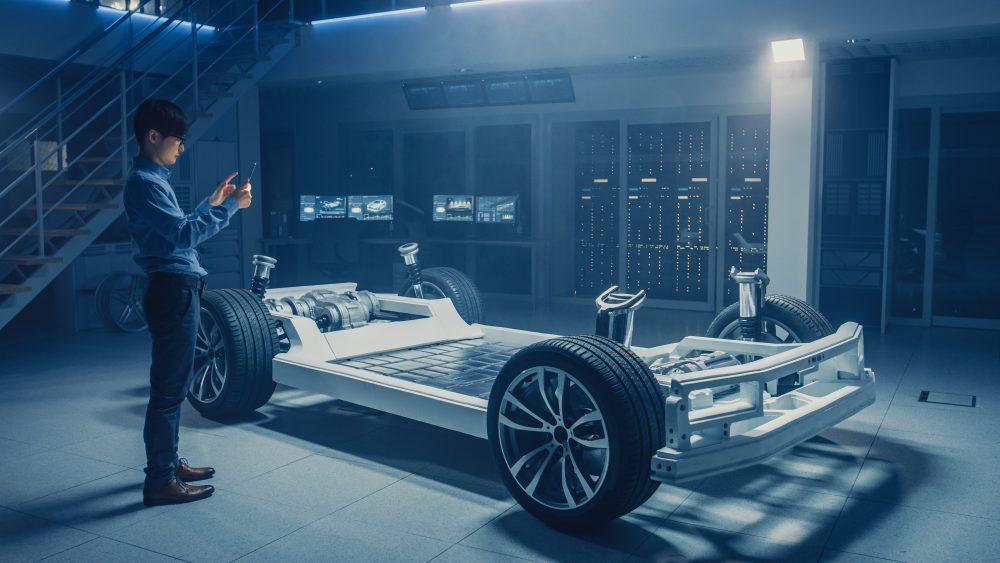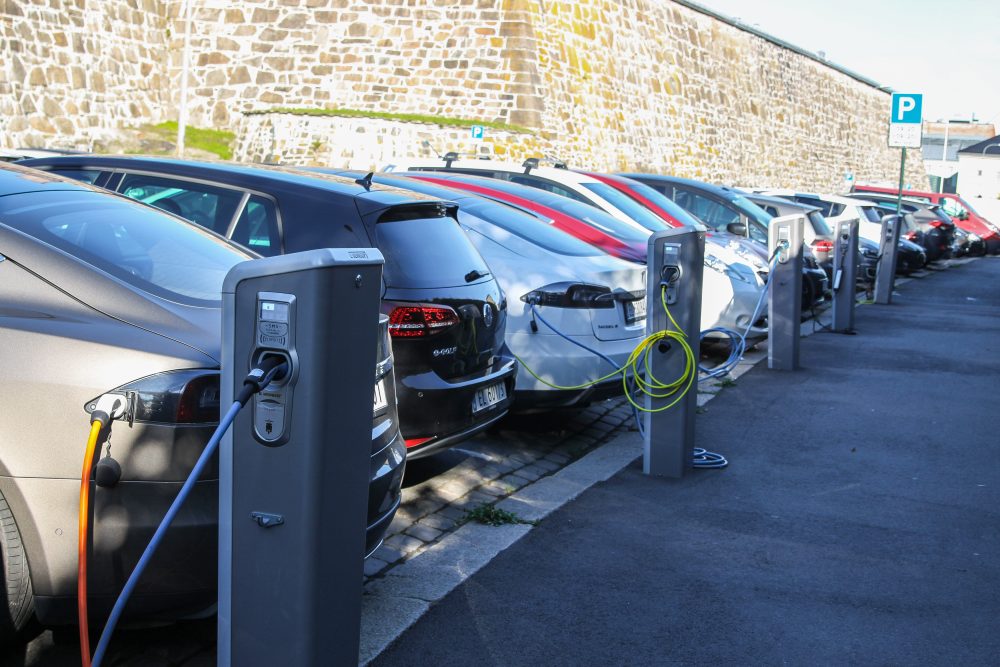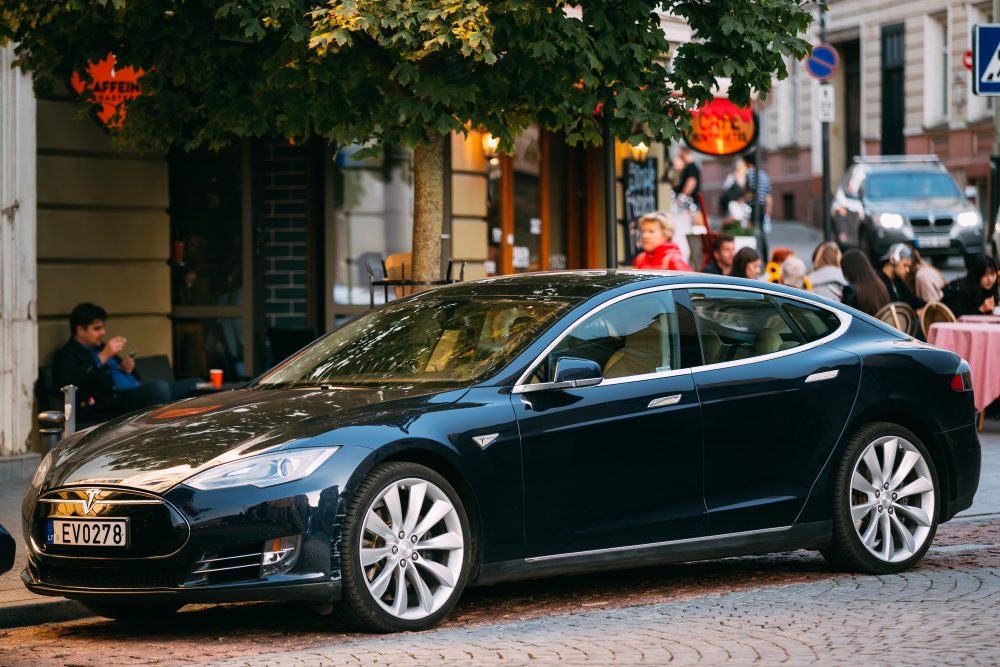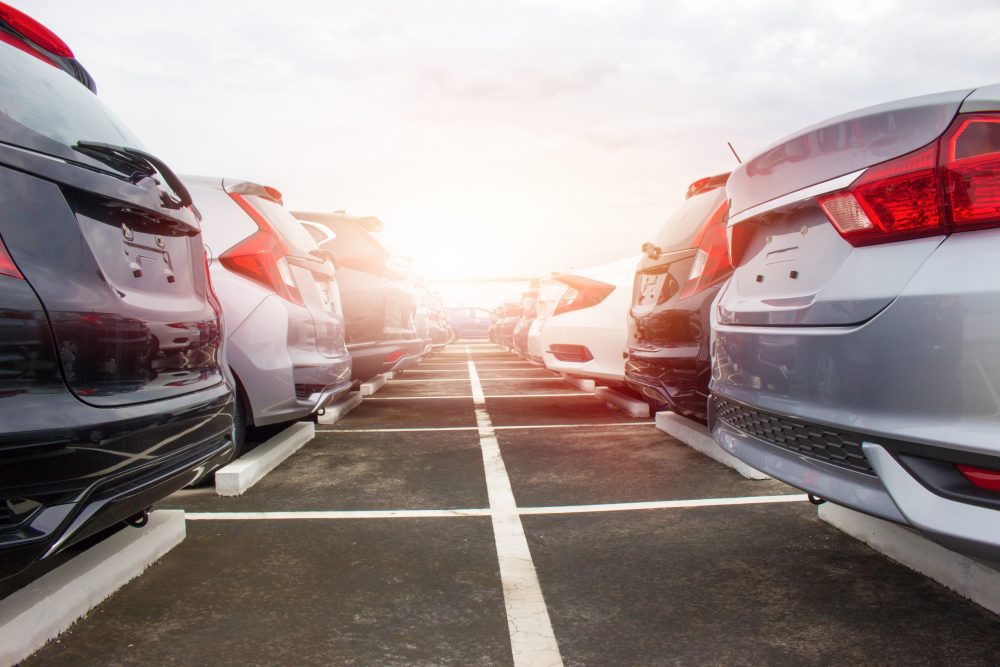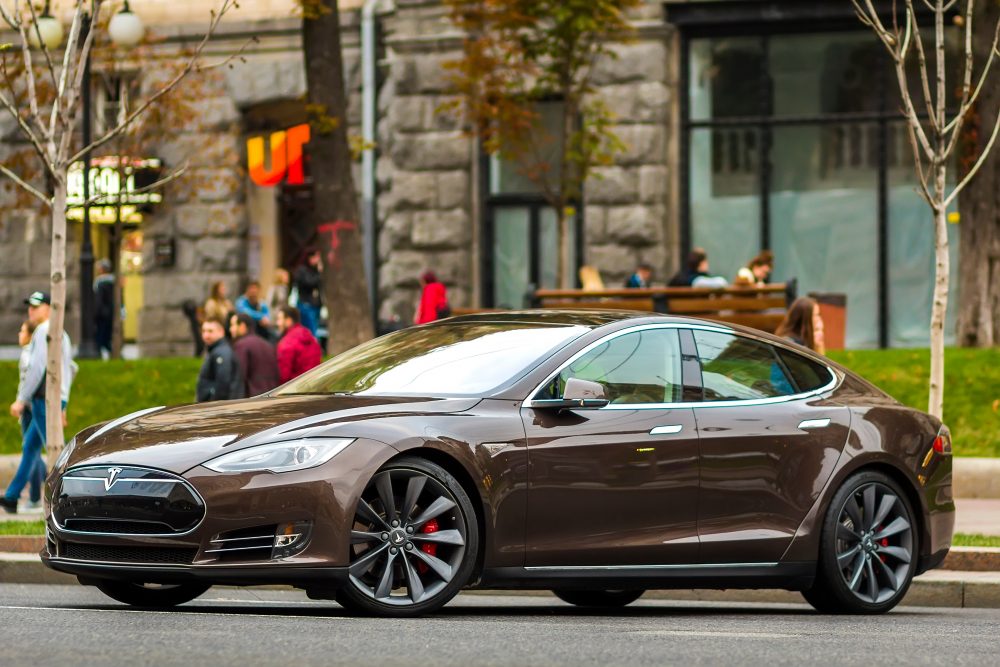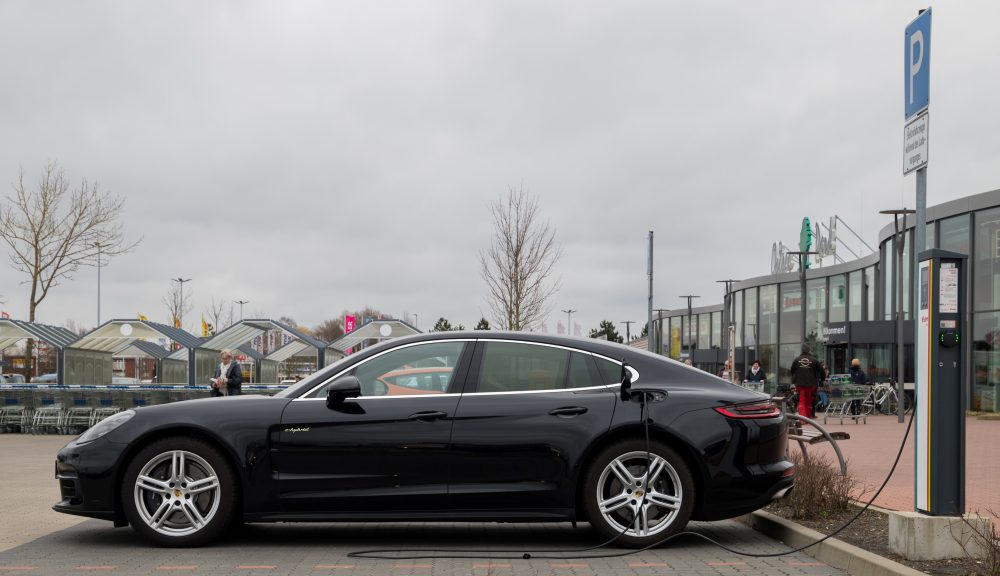I proposed the Hyundai Kona EV to my mother.
Continue readingPosts tagged Electromobility
Top Solid-State Battery News that will take E-mobility Forward
With the evolution of electric vehicles, a lot of debate has been started on its operational pros and cons along with its manufacturing hinges. Batteries being the powerhouse of electric vehicles, became the pivot of such debates. As of now, the normal practice involves the usage of lithium-ion cells for powering up electric vehicles. This whole infrastructure, spreading over hundreds to thousands of cells makes up for a complete battery pack for electric vehicles. As these batteries are rechargeable and the same ones that are being used in smartphones, so there are chances that this is what made manufacturers pick lithium-ion (Li-ion) batteries. However, as it takes much more power to energize an EV as compared to a smartphone, so the EV battery breakthrough has always been anticipated. Its efficiency, cost, and durability are what called for such anticipation. With the breaking out of solid-state battery news, efforts towards making EV batteries sustainable have ramped up. Though this news is indeed a blessing in disguise for both EV enthusiasts and manufacturers, but there is a need to thoroughly investigate the matter that are solid-state batteries sustainable? To know the answer, keep reading!
What is a Solid-State Battery?
From the manufacturing point of view, solid-state batteries use solid electrolytes and solid electrodes to power up the connected loads, which in this case is an electric vehicle. On the other hand, lithium-ion batteries use polymer gel or liquid electrolytes. This change of the matter, i.e. from liquid to solid, has the high potential to put forward the foundations of EV battery breakthrough. Let’s find out in more detail that how solid-state battery news can prove to lay down the foundations of EV batteries sustainable future.
How Solid-State Batteries can Revolutionize the EV Industry?
Electric vehicles have a substantial role in taking forward the green initiatives of e-mobility. While being solely energized by a battery source, there is no doubt in the expected contribution of solid-state batteries for the EV battery breakthrough. Following are some of the ways in which solid-state batteries are set to revolutionize the EV industry:
- Charging Time: Depending on the overall architecture and battery size of the EV, it almost takes about an hour to charge an EV battery at the Level-2 charging stations. However, with solid-state batteries taking over, there are estimates that charging time will go below 10 minutes.
- No Overheating: Since electrolyte will be a solid material, so it won’t get as hot as a liquid electrolyte, like in the case of Li-ion batteries. So, it is highly projected that solid-state batteries will be more heat resistant than lithium-ion batteries.
- Longer Driving Ranges: Typically, lithium-ion batteries deliver an energy density of around 700 watt-hours per liter (Wh/l). With such energy density, they can deliver a driving range of around 500 km per full charge. However, with the solid-state battery news rolling out, the solid-state battery energy density is expected to stand around 1000 Wh/l. Subsequently, this energy density of 1000 Wh/l will make EVs capable of driving up to 700 km without any need for recharging.
- More Safety: The typical EV batteries contain liquid electrolytes which pose a greater risk in case of electrolyte leakage or any other associated calamity. However, with the adoption of solid-state batteries, this risk will be mitigated as such batteries contain solid electrolytes. Unlike liquid electrolytes, such electrolytes do not cause any flammable calamity.
- Compact Size: Usually in the EV, the bottom portion of the vehicle contains battery cells, and to provide more range per charge, more battery cells are needed in the vehicle. Solid-state batteries are doing to be in compact size as compared to lithium-ion batteries. Therefore, more number of battery cells can be placed in the vehicle in lesser space, eventually increasing the range per charge.
In a nutshell, these relevancies for the EV industry itself answer the long posing question of are solid-state batteries sustainable? Indeed, the EV batteries sustainable future with solid-state batteries has been long-waited and it is now set to revolutionize the EV industry.
Latest Solid-State Battery News and Development
Since the realization of anticipations related to EV battery breakthrough via solid-state battery news, a lot of work is being done to forego any of the implications. Every R&D institute, university’s research centers, and companies research units have started ventures to work on EV batteries sustainable research projects on solid-state batteries and answer the primary question that are solid-state batteries sustainable?
Samsung Solid-State Battery
In all such pursuits, Samsung took the lead, as Samsung’s Advanced Institute of Technology (SAIT) has announced that it has developed a solid-state battery which is all set to revolutionize the whole EV industry. According to them, their solid-state battery will cover the distance from Melbourne to Sydney, or vice versa, in one single charge. Not only does the battery’s energy density is improved, but its size has also been shrunk to half. With these developments, it clearly means that without any allocation of extra space to store the battery in EV, the range of EV can be doubled. For example, Tesla Model S currently delivers the range of about 700 km with Li-ion battery. However, if this battery pack is replaced with Samsung’s solid-state battery pack, then it’s range would experience a whopping shift to 1400 km. In addition to this, charging cycles have also been improved. This Samsung developed solid-state battery can be recharged for over one thousand times, which means that it can deliver one million kilometers in its total driving range. As of now, a prototype has been developed so as to assess the performance parameters of this battery. This is why its price has not been announced yet. However, given the compact size, longer life, and enhanced number of cycles, it is indeed going to reshape the future of e-mobility.
Toyota and Panasonic Partnership to build Solid-State Battery
Not only has Samsung contributed to this EV battery breakthrough, another big name in the automobile industry, Toyota, has also played its cards in making EV batteries sustainable. Toyota has partnered with Panasonic to build a solid-state battery prototype. Toyota was all set to showcase its working prototype on the occasion of the 2020 Tokyo Olympics but due to coronavirus, it has been rescheduled to 2021 and so is the revelation of their solid-state battery prototype. It seems as if there are some glitches in Toyota’s design and they took advantage of Olympics games rescheduling for improving their prototype. This insight is validated by the remarks of Executive Vice President of Toyota’s powertrain company where he said that though Toyota has a working prototype, they are still looking for ways to harness the true potential of solid-state batteries.
Conclusion
For years, EV battery breakthrough was a long pending thing. The efforts were not only centered on improving the battery infrastructure but EV batteries sustainable nature was also a very anticipated thing. Lithium-ion batteries are power-hungry, costly and take more space to be affixed in an EV. This bottleneck is what motivated researchers to come up with something that shall take forward the e-mobility and improves the efficiency of EVs. With the solid-state battery news, the rays of hope have been lit to a greater degree. Solid-state batteries have the right credentials to remove all the bottlenecks that were created by the lithium-ion batteries. From decreased space allocation to offering high energy density, solid-state batteries are set to embark on the future of electric vehicles. To the questions that are solid-state batteries sustainable? A simple YES! is a short yet comprehensive answer that is going to be validated very soon.
If you want to learn more about EV performance optimization, click here.
References
- https://www.samsungsdi.com/column/all/detail/54344.html
- https://www.ilika.com/latest-news/how-does-solid-state-battery-technology-power-electric-vehicles
- https://www.energyville.be/en/press/expert-talk-solid-state-batteries-electric-cars-larger-autonomy
- https://www.energyville.be/en/press/expert-talk-solid-state-batteries-electric-cars-larger-autonomy
- https://www.whichcar.com.au/car-news/samsung-solid-state-battery-breakthrough
- https://www.caranddriver.com/news/a33435923/toyota-solid-state-battery-2025/
Top EV Charger Infrastructure Challenges in 2020
EV future is quite bright and upraising, but there are many EV infrastructure challenges, specifically EV charger challenges that need prime importance.
Continue readingHome vs Commercial EV Charging – Same Goals, Different Challenges
The wholesome benefits of electric vehicle (EV) cannot be reaped unless associated infrastructure is not put in place. While being less reliant on fossil fuels, EV is a great way to bolster initiatives, such as carbon-free environment. As of now, EV sales make up to 8% of global vehicle sales. This percentage is expected to rise to 1/3rd of global sales by the end of the year 2020. Furthermore, the demand for EVs will grow to such an enormous degree by the year 2030 that they will account for 51% of the auto market. Seeing this trend, automobile manufacturers have pledged to invest $300 billion towards EVs and EV charging infrastructure development. While these developments are very appreciable to their core, but in essence, it indicates towards one sheer gray area which is lethal enough to destroy the novelty of electrical vehicles. This gray area pertains to the EV charging commercial and residential EV charging home issues. This tussle of home vs commercial EV charging is very imperative to be dealt with. To understand this, a quick overview of EV charging can prove to be beneficial.
There are three levels that are prevalent pertaining to EV charging. Level 1 charging is the slowest but most readily available source of EV charging. This typical residential EV charging uses a 110V supply line to charge an EV. Level 2 EV charging is relatively faster than Level 1 and uses a supply voltage of over 200V (typically 220V) to charge an EV. Generally, it can charge an EV at a rate of 12 to 60 miles per hour. Level 3 chargers are the fastest and distinguished EV chargers. Unlike Level-1 and Level-2, they use Direct Current (DC) to charge an EV. Their voltage rating is as high as 800V and charges a typical EV up to 80% in just 20 to 30 minutes. However, as opposed to the other two levels, these types of EV chargers cannot be used as residential EV charging, and therefore, can only be installed as EV charging commercial units.
The Challenges of Commercial and Residential EV Charging
The basic idea behind EV charging commercial and home units seems to be very similar, which in actual is indeed similar. But like any other conflicting thing, there is a thin margin line which emerges as a challenge in the form of home vs commercial EV charging. To have a better understanding, let’s discuss the respective challenges separately. Following are the challenges for both EV charging home and EV charging commercial:
Challenges of Residential EV Charging
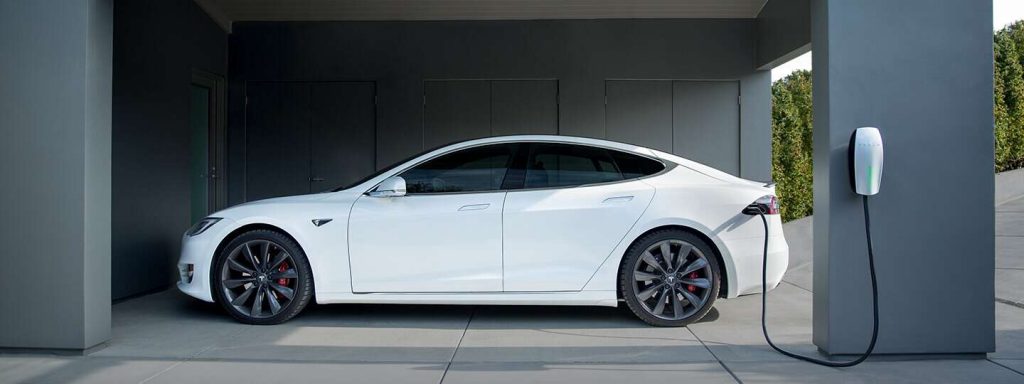
Below is the overview of challenges related to residential EV charging:
- Property Ownership: Property ownership poses a very gross concern for setting EV charging home units. It won’t involve much of a hassle for property owners or homeowners, but those who live in a shared vicinity or multi-tenant building such as apartments, face a lot of hardships in charging their EVs at their place of residence. Such people first of all have to face several regulatory issues, such as the consent of the homeowner or other person using the same building. Secondly, they also have to face an infrastructural limitation where residential properties aren’t equipped with the extra incremental load handling strategies. So, even if a homeowner or other stakeholders permit to charge EVs, regulatory penalties may tend to lose the efficacy of charging EVs at home.
- Slower Charging: Most of the residences host Level-1 chargers which charge an EV at an extremely slower rate. Typically, a person has to plug his/her vehicle overnight or more than that to charge it fully. While Level-2 chargers are also available for residential EV charging but the associated infrastructural cost bars many EV drivers to either commute to far-flung public charging stations or to rely on slow charging of Level-1 EV chargers.
- Ampere Rating: It is also one of the major EV charging home challenges. While most of the EVs get charged on the 32A EV chargers, but it has been seen that most of the latest EVs, such as Tesla 3, features 48A EV charging, whereas Chevy Bolt uses a 40A charger to get charged. Since it seems that future EVs will feature more ampere ratings charging capabilities to decrement the charging time. Therefore, it is a very pinnacle challenge for the residential EV drivers to choose such a charging port or infrastructure which shall meet their future EV charging aspirations.
Challenges of Commercial EV Charging
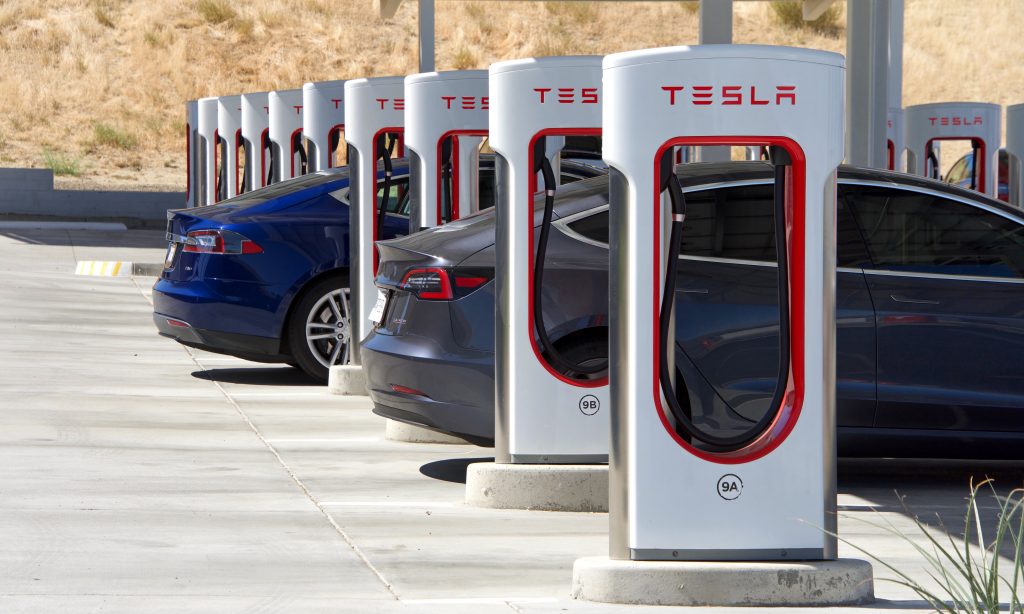
Following is the overview of key EV charging commercial challenges:
- Demand Charges: It is a very prominent challenge when it comes to commercial EV charging. Once someone sets up commercial EV charging stations, demand charges come as a resistive force. In the form of demand charges, EV charging commercial station owners have to pay a fixed amount per month just for the reason that a large amount of energy is at their disposal. Consequently, this cost is passed on to the customers which ultimately results in the costly EV charging for the end consumer.
- Bureaucratic Hurdles: For setting up an EV charging commercial setup, a person has to experience a lot of bureaucratic hardships. From import duties to getting permissions and licenses, there is a lot involved for the person who pursues the establishment of a commercial EV charging station. Subsequently, it increases the overall time frame to establish a commercial EV charger, and therefore, depreciates the morale of those who are interested in widening the spread of EV charger network.
- Location: It is one of the most common as well as most talked EV charging commercial challenges. It is said that 95% of EV charging occurs at home. It is also due to the reason that commercial EV charging stations aren’t located near to the load centers or the locality where sheer demand of EV charging ports exist. People are becoming immune to the residential EV charging and this trend is depreciating the cause of increasing public or commercial charging stations.
Conclusion
The growth of EVs is highly dependent on the implacable enactment of residential EV charging units as well as EV charging commercial stations. Amid home vs commercial EV charging tussle, the sheer global commitment towards reducing the carbon emissions will hamper. This can only be avoided if challenges are mitigated with clarity and sound strategy. The implications of EV charging home units are very easy to mitigate by promoting the culture of public charging. However, those who still want to charge their EVs at home and want to mitigate the challenge of ampere ratings, it is advised to equip residential charging with a 40A charger. On the other hand, challenges related to commercial EV charging will need to be dealt with stringent measures too. The viable solution is to proceed with the multidisciplinary approach of easy processing and promoting people to opt for commercial charging. In this way, the process of establishing the commercial EV charging station will be eased up along with the un-burdening of the residential electrical network. In either way, the private sector will come forward to establish EV charging stations on their own with their attractive sales and advertising mechanisms. This will ultimately result in increased EV charging stations, boosting commercial activity, meeting the carbon emission goals, and easing the life of those who own EV and couldn’t charge them at home due to being in the shared vicinity.
Want to know specific about Germany EV charging requirements, click here.
References
- http://www.autonews.com/mobility-report/ev-sales-growing-faster-expected
- https://evcharging.enelx.com/news/blog/550-different-ev-charging-levels
- https://cleantechnica.com/2018/03/18/residential-ev-charging-top-brands-home-solar-renters-vs-owners-cleantechnica-report/
- https://www.techrepublic.com/article/the-challenges-of-ev-charging-10-things-to-know/
Can you get an Electric Bike on a Budget? 5 Options and Selection Tips
In the midst of climate implications, a decline in global oil reserves and unexpected fluctuations in the fuel prices, electric bicycle news brought a sigh of relief for many daily commuters and environment-advocates. Unlike conventional bikes, electric bikes are quite environment-friendly as they do not emit any carbon emissions. Furthermore, their compactness also gives the users leverage to swim through congested traffic. It is the sheer demand for electric bikes which made it the $15.42 billion market in 2019. The Asia Pacific is the largest as well as the fastest-growing market for electric bikes. With China being the chief exporter of electric bikes, the sales of electric bikes are projected to experience CAGR (Cumulative Annual Growth Rate) of 6.21% for the period 2020-2025. Like any other source of mobility, electric bikes also have a lot of range from low-grade models to high-grade models. However, the best trade-off is found in affordable electric bikes. While best budget electric bikes are quite reasonable on the budget, they host all those features that buyers could typically expect in the 21st century’s e-bikes. Let’s find out to know that what should a buyer consider while opting for affordable electric bikes and what are the best budget electric bikes?
What to Consider while searching for Affordable Electric Bikes?
With the electric bicycle news rolling all around, it narrates that there are dozens of electric bikes available today. Therefore, it is not an easy task to choose the best one. Following are the five key points which a buyer must consider while buying an affordable electric bike:
- Understand the purpose: It is very important to understand the purpose for which an electric bike is to be bought. For example, if someone is looking to buy for long distances, then the 400Wh battery would serve the purpose. However, if someone is opting for an e-bike for the sake of comfort, then step-through frame e-bikes are best.
- Warranty: In pursuit of affordable electric bikes, do not fall in warranty traps, as gambled in electric bicycle news. In any case, the warranty does matter. Therefore, always look for an e-bike that offers a warranty on the parts, battery, and motor.
- Durability: Choose a bike whose manufacturing quality is of the type that ensures durability to sustain for over five to ten years. Moreover, the battery should be durable enough to last for at least 600 to 800 full charge cycles.
- Test Ride: If e-bike belongs to a famous brand, then this does not mean that it will be best for everyone. Sort the suitable models and take a test ride before making a final decision.
- Choice of Retailer: This consideration is very important from the aspect of warranty claims and after-sale services. If the retailer is of good reputation, then first of all he/she will guide in the best possible way. Secondly, the retailer will also help in the future regarding e-bike maintenance or warranty claims. Moreover, from the retailer of a good reputation, one can expect high quality and genuine electric bikes.
Top 5 Best Budget Electric Bikes
Above mentioned consideration does not come into real play unless viable options are available. There are many electric bikes in the market but choosing the best budget electric bikes is sometimes as hard as choosing the best parking spot in a busy city station. However, for the ease of many, following are the five most affordable electricity bikes:
RadMission

This super-affordable electricity bike is manufactured by the Rad Power Bikes. RadMission can reach a top speed of 25 km/h with the 250W geared hub motor. It is powered through a 504Wh Lithium-ion battery with a payload capacity of 125Kg. It has a LED control panel, 40 Lux headlight, and the range of 40-72 Km. It is available at the introductory price of €1,099 or $1,267.
Gtech eBike City

Gtech eBike City is one of the most affordable electric bikes with a price tag of £995 or $1,267. It can go up to 30 miles in one single charge with the 36V 5.6Ah Lithium-ion battery. It has the linear-pull brakes with the 17-inch aluminum frame. Besides that, it has the 250W rear hub motor and takes about 3 hours to get fully charged. It weighs just 1.4kg and comes with the 2 years of warranty.
Propella 7-Speed
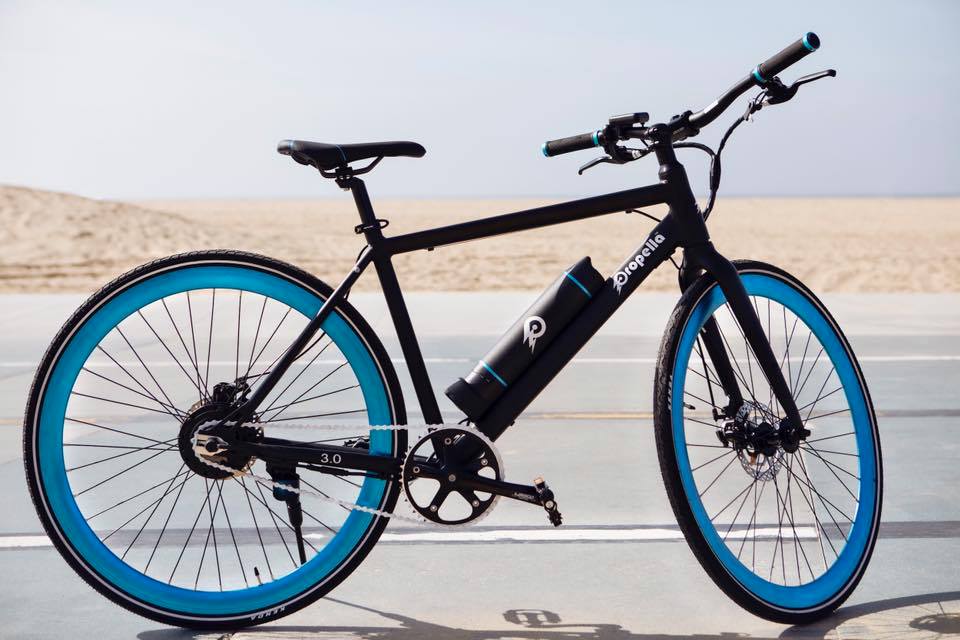
This 250W rear hub motor power e-bike is amongst the best budget electric bikes. Propella 7-Speed has the 250Wh Samsung-manufactured Lithium-ion battery with the charging time of 2.5 hours. It has the 5-level pedal assist with the LCD, displaying speed odometer, battery status, and time. It can achieve the top speed of 29 km/h with the driving range of 25-40 miles or 40-64 Km. With the overall weight of 16.8 kg, this splendid e-bike is available against the payment of $1,299 along with a 1-year warranty.
Jetson Metro Folding Electric Bike
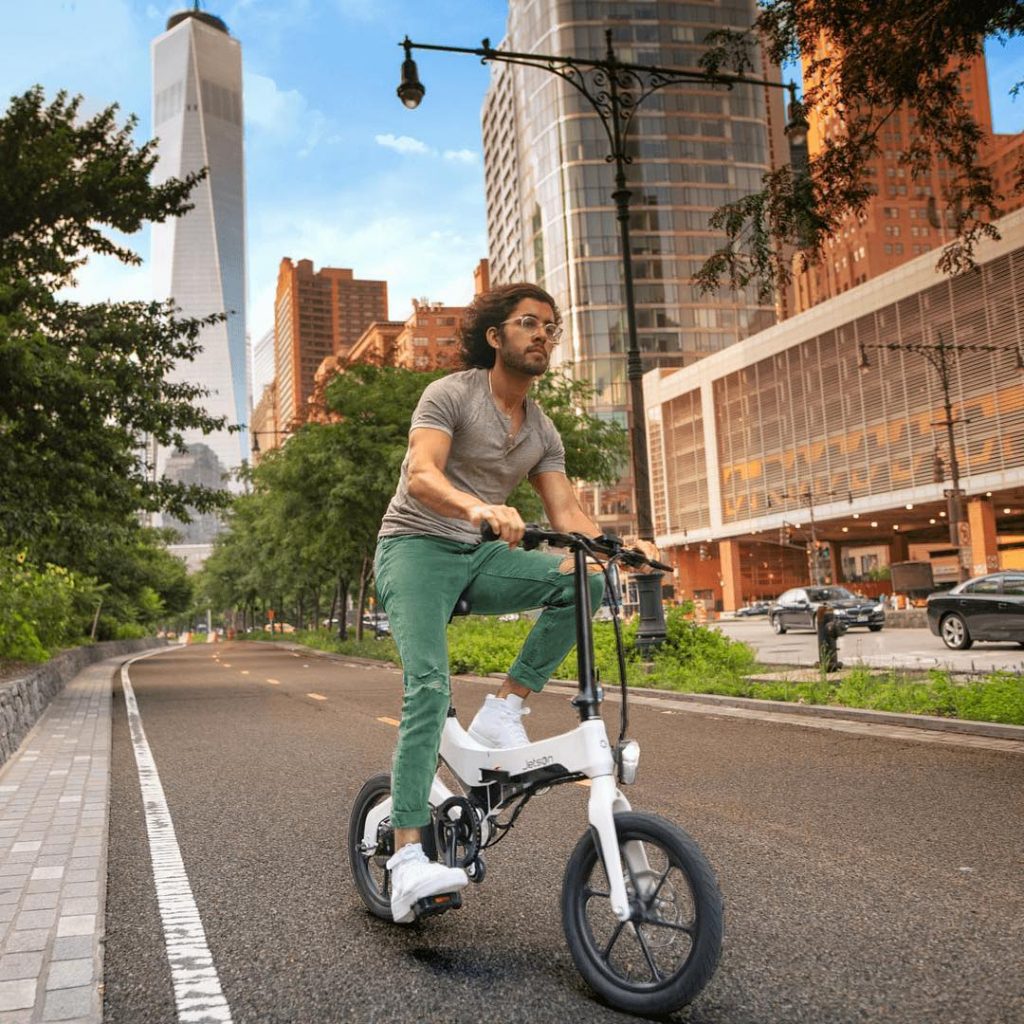
Metro Folding Electric Bike is an incredible option for those who like compactness. It is equipped with the 36V 5.6Ah lithium-ion battery driving 250W hub motor. It is designed to reach the top speed of 15.5 mph along with the max range up to 25 miles. It has a 16-inch wheel with the 3-level pedal assist and 4 hours of charging time. The price tag of $799.99 makes it one of the most affordable electric bikes.
Aventon Pace 350
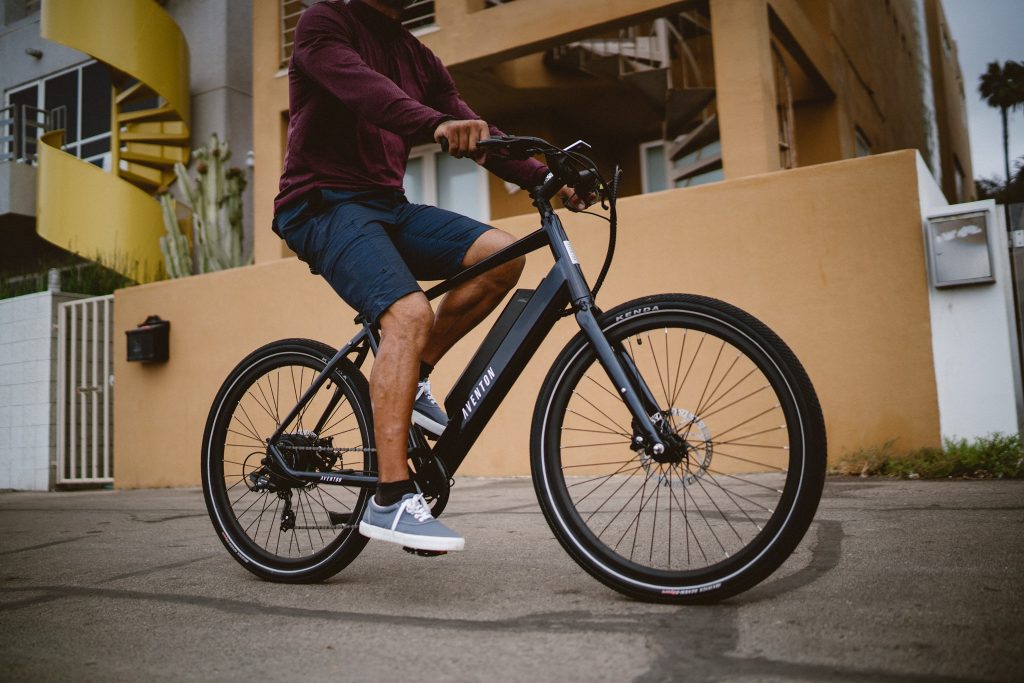
With the estimated range of 25-40 miles, this exciting e-bike is priced at the rate of $1,099. This bike is equipped with the 5-level pedal assist and 350W rear hub motor. Its 417.6Wh Samsung-manufactured li-ion cell battery gets recharged in about 3-4 hours with the 36V 2A fast charger. This best budget electricity bike comes with the LCD display along with a cadence sensor.
Conclusion
In addition to the emission-free and compact mode of commute, the cost of buying plays a major role in deciding which model of electric bike should be bought. At the end of the day, the value of money is what matters. It is the only thing which gives peace of mind to the buyer that if he/she has bought a little expensive e-bike out of best budget electric bikes, then given the extent of comfort and features, it’s worth it. As the electric bicycle news is rolling all around and from the above-mentioned options, it is quite evident that under a decent budget, many options are available for buying a quality electric bike. From the above-suggested electric bikes, it can very well be concluded that Propella 7-Speed offers great value of money. Take its mileage or the top speed, it aces through other affordable electric bikes. The inclusion of LCD display and the 5-level pedal assist makes it the first choice for anyone looking for a budget-friendly electric bike. It’s 250W powerful motor will assist the rider in climbing through steeper hills and terrains. In a nutshell, yes! you can definitely get an electric bike on budget and Propella 7-Speed is a clear example of it.
If you want to know about top electric cars of 2020, click here.
References
- https://www.mordorintelligence.com/industry-reports/e-bike-market
- https://newwheel.net/electric-bike-basics/top-ten-tips-for-buying-an-ebike
- https://radpowerbikes.eu/products/radmission-electric-metro-bike#specs
- https://www.gtech.co.uk/ebikes/ebike-city.html
- https://www.propella.bike/products/7-speed
- https://ridejetson.com/products/metro-folding-electric-bike
- https://www.aventon.com/products/aventon-pace-350-e-bike
EV Performance Optimization for Mobility Bottleneck Removal – A 2020 Perspective
Electric vehicles define the future of mobility. In the times when the whole world is facing shrinking of global oil reserves, the electric vehicle seems like a beacon of light for future mobility. Realizing the relevance of EVs in the future, many countries have already taken keen steps to make EVs a norm in society along with efforts on EV performance optimization. Furthermore, the emerging popularity of renewable energy sources, mainly solar energy, is also complementing EVs. The demand or popularity of EVs in the future can be guessed from the statistics, where China has the highest number of EVs with 3.3 million units. On the other hand, the US is the second-biggest EV market with 1.4 million units. It is being forecasted that by the year 2025, the EVs will capture 84% of the Chinese market share. Obviously, this motivates other nations especially the US and European nations to ramp up their EV reliance, thus leading to the sheer demand of EVs including advancements in EV performance and charger optimization.
But there is a point to ponder whether our current infrastructure and EV technology are rich enough to sustain such emerging demands? Do our mobility network and EV performance parameters are capable enough to welcome such a huge number of EVs? There is a need to look for EV charger optimization so as to not worsen the situation of the mobility bottleneck. Furthermore, it is also imperative to cater to EV performance optimization so that forecasted benefits both from environmental as well as financial perspectives can be capitalized. It must be cleared that the mobility bottleneck is nothing like a conventional traffic jam. Instead it such a localized type of traffic choking where disruption is caused by way of some physical constraints such as road construction, closure of specific lane, and poor mobility or transport infrastructure. Let’s try to establish this matter of correlation in more detail.
How EV Performance Optimization can be seen in the 2020’s Perspective?
Seeing through the EVs in 2020’s perspective is very important. First of all, it is the start of a new decade, the strategies made this year shall have long-lasting effects towards meeting our 2030 goals, provided this consideration is made. Secondly, but most importantly, 2020 is also a year of pandemic and economic recession. In the near history, the world hasn’t experienced what has been experienced now. So, this new world order provides us with a platform to revamp our strategies and move more sustainably towards the future. Therefore, the 2020’s perspective is very pivotal in this sense. In continuation of this, there are two key areas for EV performance optimization in the 2020’s perspective:
EV Charging Optimization
EV charging optimization is one of the main constituents of EV performance optimization. While a prominent number of EVs are forecasted to be penetrated into the system, there is a need to look forward to potential issues related to EV charging and their impact on the overall power system or national grid. In the situation when 50 million EV units are expected to roll out by the year 2025 and about 125 million by the year 2030, there is a chance of substantial impact on national grids. Furthermore, to entertain such a large number of EVs, both charging infrastructure as well as power systems, should be stern enough to meet consumers’ demand. There is a chance of harmonic distortion which may further lead to deteriorating power quality. This implication may affect both EV users as well as domestic electricity users. Since level 1 EV chargers are slow chargers so they require EVs to be connected overnight. This overnight EV charging penetration will lead to the disturbance in the peak load curve. Both of these factors lead to the loss of cost-benefit as consumers will pay more by facing penalties owing to lowering the power quality along with more electricity consumption during peak times.
The above-mentioned implications can be dealt with the employment of EV charging optimization strategies. Ideally, this implication can be dealt by increasing the network capacity or providing power to the EV charging stations from the designated power grid. In this way, harmonic distribution and power quality deterioration will be reduced to a much greater degree. Even if any such condition arises, it won’t affect the regular domestic or industrial consumers. Moreover, EV charging optimization can also be ensured by appreciating the installation of charge controllers in the EVs. Such charge controllers prevent any peak power prices thus leveraging EV users to maintain the cost-effectiveness of EVs. Another approach to achieve EV charging optimization is to make use of smart charging mechanisms where the mode of EV charging is handled by the electricity utility or the EV charging station. This system can either be centralized or decentralized, as per the demand of EV in that particular vicinity.
Energy Efficiency
The energy efficiency of electric vehicles is another important determinant of EV performance optimization. This is the only factor that has substantial contribution towards cost-benefit and high-grade performance. To achieve energy efficiency, EV’s weight constraint has a major role. Lighter the weight, less will be energy consumption from batteries, as EV motors won’t have to exert more power to perform their respective functions. This will enable EVs to drive more without altering the battery capacity. For example, if heavyweight EV could go up to 350 miles in one full charging, then the light EV of the same specs can go up to 400, or in other words, substantially more than that of heavy-weighted EV. However, this should not be perceived as analogous to choosing lighter materials. Instead, this point enables engineers to remove material while keeping the strength and stiffness of the EV intact as per the standard comfort and safety guidelines.
Electric vehicles with four independent electric motors on each wheel are another way to achieve EV performance optimization. There are three reasons due to which such methodology can prove beneficial for yielding expected energy efficiency. First of all, the absence of mechanical links dismisses the probability of friction loses and makes sure that all four wheels work independently. Secondly, independent motors ease the implementation of certain control strategies such as traction control, antilock braking system, and vehicle stability control. Thirdly, the respective energy characterization of each of these motors will provide a better way to control them, thereby amounting to energy conservation and so does the optimized performance.
Mobility Bottleneck and EVs
Mobility bottleneck is going to be a serious concern for future mobility. While EVs seem to be a feasible solution both from financial as well as environmental perspective. But these benefits could go in vain if considerations related to EV performance optimization are not held in place. EV charging optimization has a considerable role in curtailing mobility bottleneck. Since EVs take a lot of time to charge, so in a condition where fast charging capabilities are not enacted, our highways will experience serious mobility bottleneck as a lot of EVs will have to wait in the queue to get recharged. Furthermore, mobility bottleneck will result in more waiting times which further result in discharging the batteries without even stretching through a mile. This will lead to more charging time, long waiting queues, and most of all, a higher cost in terms of charging a vehicle. All these characteristics will result in losing the cost-benefit of EVs. On the other hand, energy efficiency can result in more driving ranges, thus giving more leverage to EV batteries to sustain for a longer time. Consequently, it will result in less discharging times and letting people commute more in a single full charge.
In a nutshell, both of the above measures are quite rich in their respective essence and are thus very pertinent to be adopted. With these measures, not only will mobility bottlenecks be removed, but the efficiency and the cost-saving aspect of EVs can also be ensured.
Now more about EVs post COVID-19 industry forecast by clicking here.
References
- https://www.statista.com/statistics/244292/number-of-electric-vehicles-by-country/
- https://www.statista.com/statistics/989924/china-share-of-pure-electric-vehicle-in-new-energy-passenger-vehicle-sales/
- https://www.mdpi.com/1996-1073/13/7/1545/htm
- https://www.altair.com/e-mobility/
- https://journals.sagepub.com/doi/full/10.1177/1687814018765549
Model S Redesign Chances: Reality Check
Being one of the top-selling electric cars, Tesla Model S has a lot in its credentials. Model S was first launched in 2012 as a fully electric sedan car. As of now, its Long-Range variant has an EPA range of 402 miles, which is higher than any other electric car. This was reported in many publications and was also confirmed by Elon Musk in his tweet. As far as the performance of Model S is concerned, it has the quickest acceleration capability. It is capable of achieving a speed jump of 0-60 mph in just 2.3 seconds. Being equipped with the dual motors, Model S is an All-wheel-drive variant that lets it keeps torque and traction under control. Other exciting features of Model S include the top speed of 163 mph, autopilot, 12 ultrasonic sensors to ensure collision-free driving, 17-inch driver display, 100 kWh battery size, seating capacity of five adults, and over the air updates. Altogether, Model S offers what one would like to have in the 21st century’s electric car. There are some speculations about Model S redesign in the new Model S 2020. To have a clear view about any Model S refresh chances, let’s have a thorough look over recent changes and the probability of any further redesign modifications.
Recent Model S Refresh Upgrades
Since 2012, the year when the first Model S was launched, Tesla S has gone through a lot of changes. However, it won’t be wrong to say that though only a few modifications were made since its inception, but still, Model S hasn’t experienced the full redesigning or what one would typically call as Model S redesign.
Following are some of the changes or modifications that have been done for Model S over the last five years:
- Ludicrous Mode: Tesla introduced the ludicrous mode in the Model S in the year 2015. With this ludicrous mode, 0-60 mph was brought down to just 2.8 seconds. This feature was made available with a whopping price tag of $10,000.
- Launch Mode: Launch mode was introduced in 2015, allowing Model S to acquire quicker acceleration right from the starting line.
- Front Grille: In 2016, Tesla removed the faux-front grille and gave Model S a cleaner and smoother outlook. This upgrade gave Model S the impression that of a facelift.
- Glass Roof: In 2016, Tesla introduced three roof options for prospective buyers which included painted roof, solid glass roof, and panoramic roof.
- Performance Improvements: The year 2017 brought a lot of performance improvements for the Tesla Model S. The 60 KWh battery option was discontinued. This performance improvement must not be confused with the already introduced ludicrous mode. The ludicrous mode was available at the premium price, whereas these performance changes were made in the base version. With these changes, the 0-60 mph acceleration time for Model S75 dropped to 4.3 whereas the time for S75D dropped to 4.2 seconds. Moreover, the time frame for achieving the same acceleration jump for Model S100D was modified to be around 4.1 seconds. In addition to this, the range of 90D improved to 294 miles, whereas that of P90D was increased to about 270 miles. With these series of software and hardware improvements, power liftgate and glass roof became a standard in Tesla S cars.
- Simplified Product Offerings: With the base idea of simplified product offerings, Tesla discontinued many earlier options in the year 2018. Some of the 2018 changes include removal of a panoramic sunroof, removal of black interior, removal of back child seat along with 21-inches black arachnid wheels. Furthermore, they also discontinued referral programs.
- Improved Range and Battery Size: In 2019, Tesla S was launched with an enhanced battery size of 100 KWh. While the first version of Tesla S had an EPA range of 265 miles, the 2019’s Long Range variant was capable of driving up to 370 miles in one full charge. In addition to this, low rolling resistance tires were also introduced.
- Raven: Tesla S has recently got into a powertrain reconfiguration named as “Raven”. In this reconfiguration, battery upgradation along with featuring rear motor as that of Tesla 3 was done. With this reconfiguration, both Long Range and Performance variants can provide more range per full charging. As per the EPA reports, with the raven power train, a Long-range variant was able to drive up to 391 miles, whereas Elon Musk rejected this figure. According to Elon Musk, EPA tests were faulty and Tesla S has been reconfigured to reach the range of 400 miles. However, in addition to motor upgradation, this reconfiguration also equipped Model S with the new adaptive air suspension. This air suspension system is still adjustable as per the user’s input. For example, a driver can tell the car to lower its suspension so as to reduce its coefficient of drag on the highway. This adaptive air suspension now additionally features damping modes namely Comfort, Standard, and Sporting.
Chances of Model S Redesign
There had been a lot of rumors about Model S redesign. Some people said that the new Model S 2020 will feature a lot of hardware as well as software modifications. There were speculations that the new Model S 2020 version will include a wireless device charger, a new set of two batteries, changes in car’s interior, modified charging ports, and a redesigned suspension. However, these rumors burst out when Elon Musk himself tweeted that no such Model S redesigns are under consideration. In his tweet, he categorically said that only minor changes are done, therefore no Model S refresh version is planned or being launched. These minor changes are related to interior modifications or some minor hardware/software upgradation. For example, Tesla has been reporting to test Model S and X with some new battery architectures.
Why Tesla is Reluctant to bring Major Changes in Model S?
There are many reasons for which Tesla is reluctant to bring any major changes or a Model S redesign. First of all, since Tesla is not an ordinary automobile manufacturer, so it will not follow what others used to do with their old models, i.e., redesigning. Secondly, Tesla is focusing more on launching the production of Model Y and 3S to the overseas markets. So, in such a situation, spending on model S redesigning would sound nothing but a matter of extravagance. Moreover, even though model S will be redesigned, it would still be a sedan with no substantial changes in range. This is so because nothing prominent has been achieved so far in improving battery technology. So, investing just on some exterior and interior touchups would not reward Tesla with much cost benefits. Secondly, the current Model S design and specification already seem catchy and make it dominant the EV industry significantly.
Conclusion
Model S has been the identity of Tesla for quite long. Though its sale has declined over the past few years, still it is amongst the top five electric cars in terms of sale. Traditionally, it has been seen that after a couple of years, automobile manufacturers tend to redesign the old model with a couple of interiors, exterior, and featural upgrades. But, for the CEO like Elon Musk, conventionality is a matter of disliking. Under the forward-looking leadership of Mr. Musk, rather than relying on product legacies, Tesla is looking forward to touching down new EV horizons. With the official denial from him, there is no doubt that apart from minor changes, Model S redesign is nothing but a rumor. New Model S 2020 is featuring some minor changes, but those aspiring for major changes, it’s better to look at other amazing Tesla cars.
References
- https://www.tesla.com/models
- https://twitter.com/elonmusk/status/1272678634952617985
- https://twitter.com/elonmusk/status/1148443699858292736
- https://www.motortrend.com/news/2019-tesla-model-s-5-important-updates/
- https://www.motortrend.com/news/tesla-raven-powertrain/
- https://electrek.co/2019/07/09/tesla-not-refresh-model-s-x-minor-changes-elon-musk/
- https://www.autonews.com/blogs/heres-why-tesla-doesnt-want-new-model-s
Top Electric Cars of 2020: Comparison
The technological advancements in the last few years have led to numerous innovations that have completely changed the way of living. The introduction of electric cars is one such part of technological advancements. Electric cars are undoubtedly one of the effective means to combat the CO2 emissions challenge. The feasibilities pertaining to renewable energy sources such as solar energy increases its efficacy by manifolds. In the time when people are focusing more on generating their own energy and be less reliant on the national grid, buying the best electric cars 2020 can provide a sure shot way to perceive cost benefits. Furthermore, owing to being environmentally feasible vehicles, you’ll be able to receive various rebates such as tax credits, incentivized services, and many other financial as well as environmental benefits. Find out more about other benefits associated with electromobility by clicking here.
Though COVID-19 has collaterally impacted many service sectors, but due to being environmentally compliant and the government’s incentives, electric cars demand is forecasted to be much better than other vehicles. There are estimates that electric cars will make out 3% of global car sales in 2020. If we talk about Europe, then 2020 is their target year for compliance with the low CO2 emission levels. So, in a nutshell, it won’t be wrong to say that in the bleak of this pandemic, investing in buying top electric cars 2020 is quite secure. Moreover, fierce competition to take over the EV market is proving beneficial for the end consumers, as they receive good quality electric cars at a much better price.
Top Electric Cars 2020
The benefits and subsidies can only be enjoyed if the right decision about EV buying is made right in time. All these benefits could fade away if less efficient EV is bought by seeing its low price. There are many factors such as top speed, seating capacity, battery capacity, mileage on a single charge, and many others, which are essential to take into consideration while buying an electric car. For letting you take the right decision, there is a need to have an overview of top electric cars 2020. Following are some of the best electric cars 2020:
Audi e-Tron
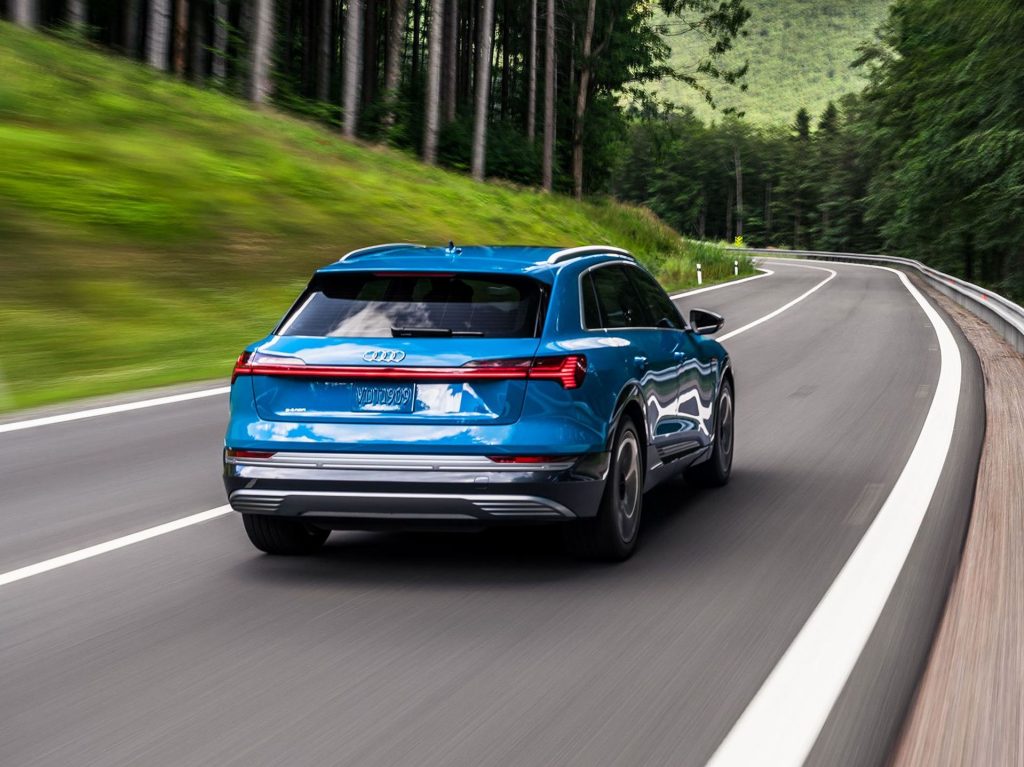
Audi e-Tron was launched in the year 2019 as an SUV equipped with a battery size of 95 KWh. This car can commute up to 54 miles on just 10 minutes charge. According to the estimates of EPA (Environmental Protection Agency), this SUV can drive up to 204 miles on a single charge with a top speed of 124 mph. This five-passenger seating capacity EV can achieve the speed jump of 0-60 mph in 5.5 seconds. With the virtual cockpit plus, infotainment system, wireless car play, route planner, charging planner, and remote climatization, it’s premium plus variant is priced at $74,800, whereas prestige variant can be bought at the rate of $79,100.
BMW i3
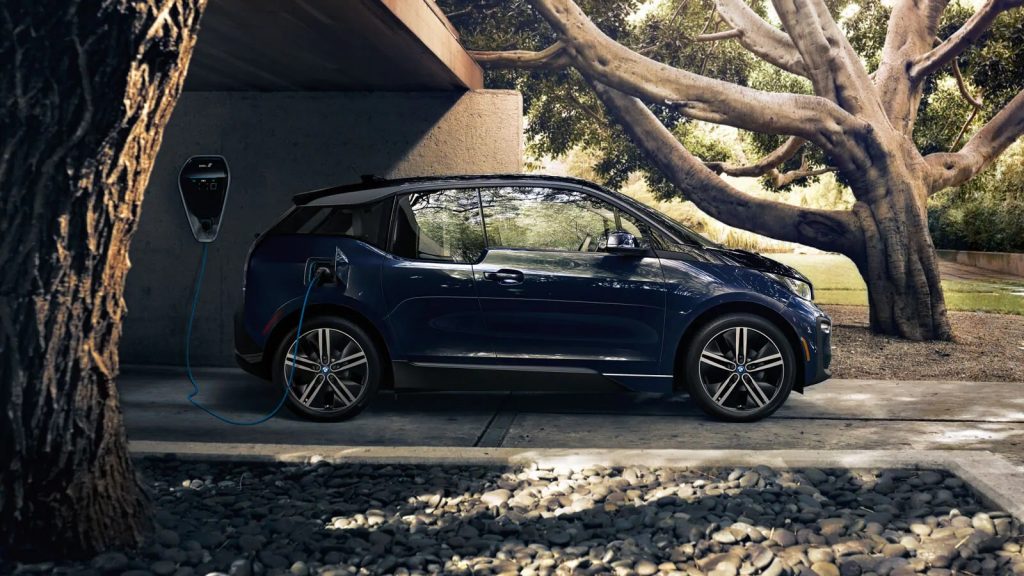
BMW i3 is manufactured to give drivers an absolute city experience with the top speed of 90 mph. BMW i3 can commute up to 153 miles on one single charge with the battery size of 42.2 KWh. With the top speed of 93 mph, BMW i3 can achieve the 0-60 mph speed jump in 7.2 seconds. BMW i3 is priced at $ 44,450 with ABS, infotainment systems, smart instrument and control system, automatic climate control, and various remote services.
Chevrolet Bolt EV
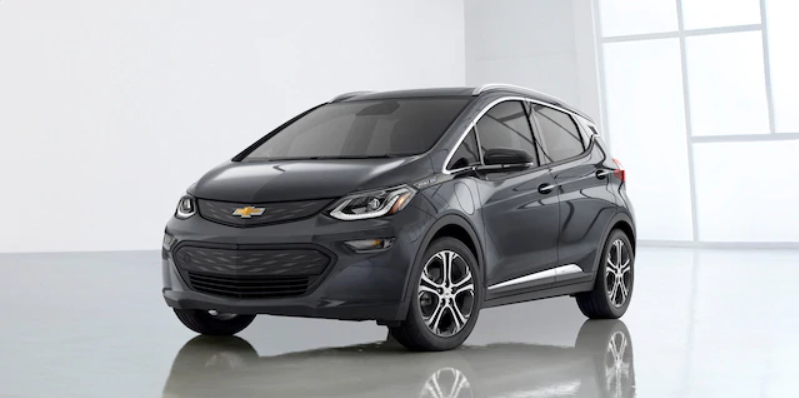
Chevrolet Bolt EV is another one of the best electric cars 2020 that is launched in 2020 as an electric hatchback. This car can achieve a top speed of 90 mph with a battery size of 66 KWh. As per the EPA estimates, this car can drive up to 259 miles in one single charge. This electric hatchback can achieve a 0-60 mph jump in 6.5 seconds. With the 10.2-inch touch screen, Wi-Fi hotspot, smartphone app integration, and GM’s teen driver safety system, this hatchback can be bought at the rate of $36,620.
Hyundai Ioniq Electric
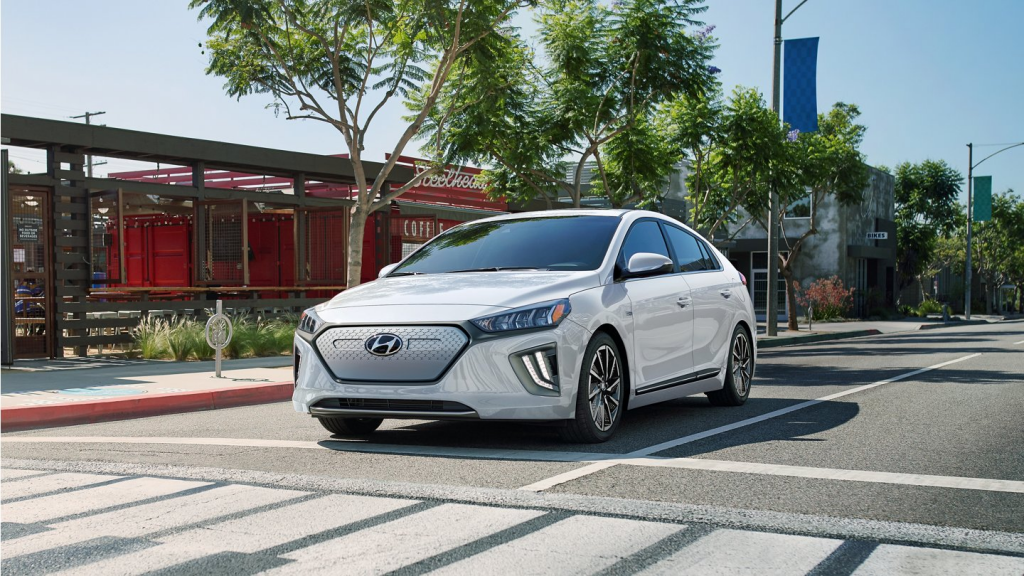
Amongst many electric cars 2020, Hyundai Ioniq Electric is an exciting hatchback with the extended passenger as well as a cargo facility. This car is available at the base price of $33,045 with a battery size of 38.3 KWh. Hyundai Ioniq can go as long as 170 miles on a single full charge. It is designed to achieve a speed of 60 mph from rest in 8.9 seconds.
Jaguar I-PACE
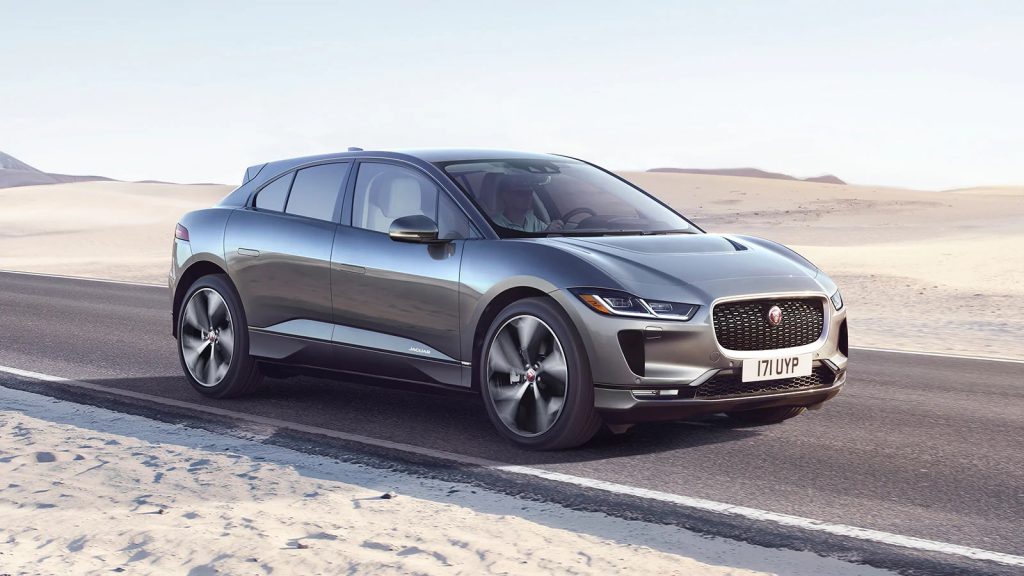
Jaguar I-PACE is one of the top electric cars 2020 with an extended cargo facility along with the shape that of an SUV. With the battery size of 90 KWh, this electric car can be driven up to 234 miles with one full charging. While it can achieve the 0-60 mph acceleration in just 4.5 seconds, it can also reach the top speed of 124 mph. This car comes equipped with the panoramic sunroof, infotainment system, Wi-Fi hotspot, and array of safety systems with the price bracket of $69,850.
Kia Niro EV

Kia Niro EV comes with a base price of $39,090. It is also known as e-Niro and retains the battery power of 64 KWh. According to EPA, this car can be driven up to 239 miles upon a single charge. With the top speed of 104 mph, this car can achieve the 0-60 mph acceleration in about 7.5 seconds.
Porsche Taycan Turbo
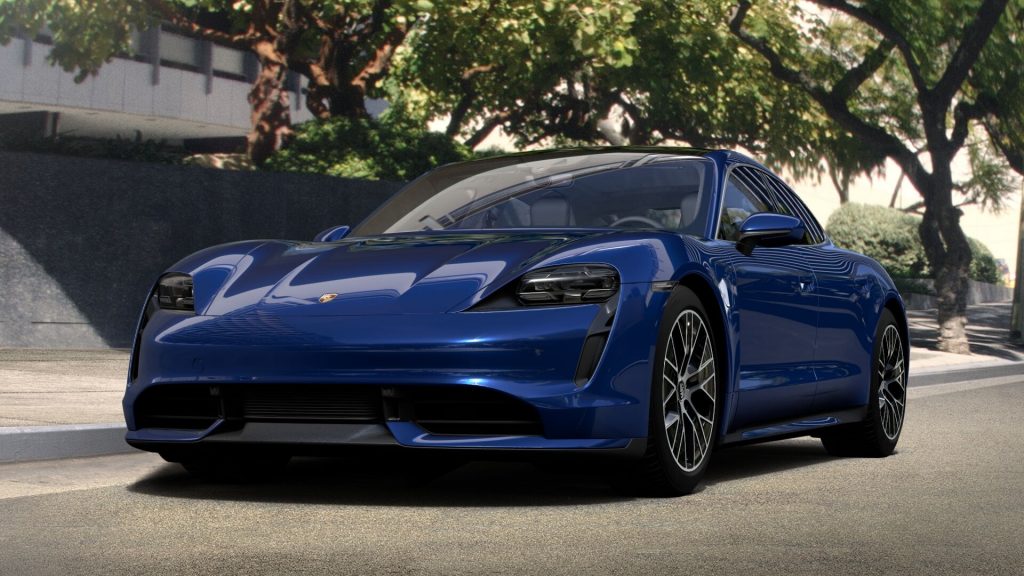
Porsche Taycan Turbo is one of the most expensive electric cars 2020 with a base price of $150,900. This electric sedan car is equipped with a 93.4 KWh battery and has a top speed of 161 mph. As per EPA estimates, this car can go up to the range of 201 miles with a single full charge. As far as 0-60 mph speed gain is concerned, the Taycan turbo is capable of achieving this in 3 seconds.
Tesla Model S
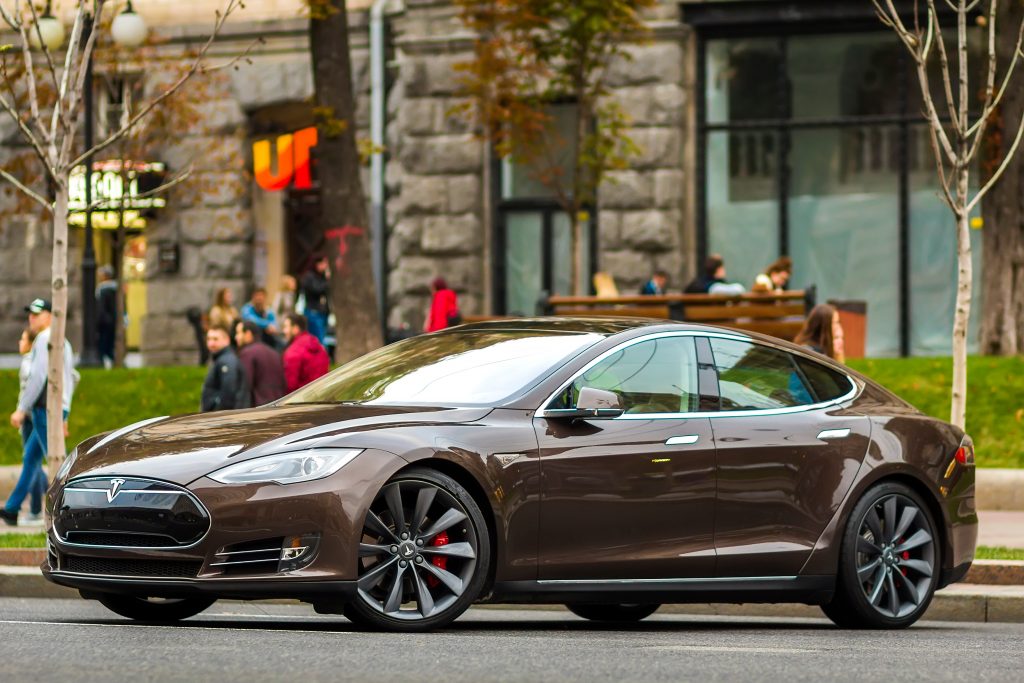
Among the best electric cars 2020, Tesla S is the biggest competitor. Tesla S comes with the battery size of 100 KWh. This car can be purchased against the price of $94,990. However, the Long-Range variant is available at $74,990. This electric sedan car is super-fast and can reach the top speed of 163 mph. Tesla S can go up to the range of 402 miles with one full charge. With its ludicrous mode, this car can achieve the 0-60 mph jump in just 2.3 seconds. This car comes with the 17-inch touch screen along with over the air updates and infotainment system.
Tesla Model X
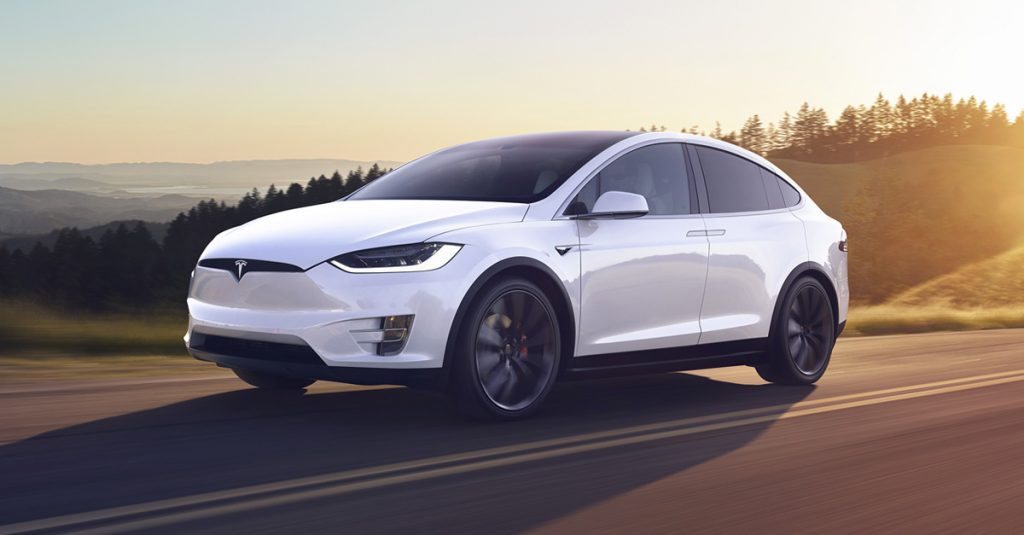
Tesla X is quite similar to Tesla S when it comes to specs but it comes with the sitting capacity of 7 passengers along with the extended cargo facility. It can achieve the 0-60 mph speed jump in just 2.6 seconds. As per EPA estimates, this SUV can be driven to a distance of 351 miles with one full charge. With the battery size of 100KWh, it can achieve the top speed of 163 mph. Tesla X performance variant is available at a rate of $99,990, whereas the Long-Range variant is available at $79,990.
Conclusion
In the situation where there exist many top electric cars 2020, opting for a single one isn’t a job of toddlers. Every car which has made up to the list of best electric cars 2020 deserves a fair chance to be bought. However, since EV buying should not be reliant solely on either price or features. Therefore, opting for an option that offers the best trade-off is what seems sane. Weighing on the aspect of trade-off and the number of EV listed above, Tesla S is the worthy car to be bought. Though the price is little higher than other EVs, but given the mileage per full charge, top speed, battery size, ludicrous mode, and most of all, the trust and identity of Tesla, this car deserves the fair chance to be chosen. In this lieu, Tesla S is indeed the best electric cars 2020.
Reference
- https://insideevs.com/reviews/344001/compare-evs/
- https://cars.usnews.com/cars-trucks/best-electric-cars
- https://www.audiusa.com/models/audi-e-tron
- https://www.bmwusa.com/vehicles/bmwi/i3/sedan/overview.html
- https://www.chevrolet.com/electric/bolt-ev
- https://www.hyundaiusa.com/us/en/vehicles/ioniq-electric
- https://www.jaguarusa.com/all-models/i-pace/index.html
- https://www.kia.com/us/en/niro-ev
- https://www.porsche.com/usa/models/taycan/taycan-models/taycan-turbo/
- https://www.tesla.com/models
- https://www.tesla.com/modelx
- https://www.kia.com/us/en/niro-ev
Tesla Ludicrous Mode Analyzed over all Models
From the vision of Elon Musk to the trust of hundreds of millions, Tesla has evolved as the brand of trust, innovation, and sustainability. Over a few years, Tesla has very much been in debate owing to the vision of its CEO pertaining to electric vehicles and scientific niches. Elon Musk is pursuing Tesla with the vision of making electric vehicles accessible to every segment of the society, both at the premium as well as affordable prices. Seeing Tesla’s sheer commitment to the EVs, it won’t be wrong to portray Tesla as the electric vehicle mogul. With its production plant currently located in Palo Alto, California, Tesla is vouching for a wider ecosystem. Apart from EVs, Tesla is leveraging its experience to the number of solutions, such as solar panels, power storage, and battery power. While conventionally, automobiles were gauged on the number of parameters like top speed, safety features, and aerodynamics, the introduction of Tesla ludicrous mode diverted the attention of car enthusiasts towards something they need the most. In its most basic definition, Tesla S ludicrous mode is a feature that enables Tesla car to go from 0 mph to 60 mph in just 2.28 seconds.
Working of Tesla Ludicrous Mode
While a lot of vouching is being done in favor of ludicrous mode in Tesla models, there is a need to see that how do such systems work. Especially in the scenario when critics are comparing Tesla S and X models with the sports car like Ferrari and Porsche, a deep insight into the working mechanism of ludicrous mode becomes inevitable.
Taking an example of the Tesla Model S car, it uses an inverter that converts electrons from Tesla’s DC batteries to the AC electrons which are then fed to the electric motors. Simply, the more will be the number of electrons, the more packets of electrical energy shall one have. Subsequently, these elevated packets of electrical energy shall provide more power to the installed motors.
For transporting current from the battery to different modules, Tesla uses a large electromagnet contactor which gets controlled by software. This contactor connects the battery pack with an external load which can either be a charger, inverter, or any other load or circuit.
The algorithm that is embedded in the Tesla’s firmware is smart enough to control the amount of the current that is flowing through the contactors so as to provide constant torque to the motor. Furthermore, with the use of a safety fuse and this type of contactor, Tesla’s system can sustain the overshooting of a nominal current of 1300 amperes to the whooping value of 1500 amperes. This differential of 200 amperes is what activates the Tesla ludicrous mode thereby letting electric motors draw more current and so does the power. Finally, Tesla drivers can achieve the acceleration jump from 0 mph to 60 mph in less than 3 seconds.
It must be noted that different users noted different times ludicrous mode takes to achieve a speed of 0 mph to 60 mph. While some people noted this time to be 2.4 seconds, whereas some noted it to be 2.8 seconds. Nevertheless, the time frame is well under three seconds. Furthermore, on his official twitter account, Elon Musk claimed this time frame to be 2.4 seconds.
Three-level Ludicrous Mode
Ludicrous mode is equipped with three levels so as to leverage users to customize this feature. The first level, known as ludicrous mode, enables users to enjoy the basic level boost to the car’s acceleration. However, for the most enhanced version, Tesla ludicrous mode has the second level named Ludicrous +. Ludicrous + enable users to have boosted 0 mph to 60 mph speed jump along with Launch control. Here the user has the option to use acceleration as well as a brake at the same time. Once the journey or race begins, the driver can release the brake thereby resulting in maximum power along with a strong launch. But for a more sophisticated user, it has a third level named Ludicrous + Warp mode. This level allows Tesla cars to offer more acceleration or in simple words more spontaneous 0-60 mph jump by increasing the heating capacity of battery packs.
A driver may find noticeable changes while going from level 1 to level 2, but once he/she shifts to level 3 from level 2, no substantial difference would be noted since the difference will be in a fraction of seconds.
Tesla Models equipped with Ludicrous Mode
Tesla offers a wide range of electric vehicles for their potential customers. But to maintain the balance between luxury and affordability, not every model is equipped with Tesla ludicrous mode. Following are two of the Tesla models that are equipped with Ludicrous mode:
Model S
Model S is a four-door sedan car that became the first car to be equipped with Tesla S ludicrous mode. According to the Tesla website statistics, Tesla S is estimated to commute up to 402 miles on one single charge. With the ludicrous mode, Tesla S gets the 20% boost in normal acceleration thereby achieving 0-60 mph jump in just 2.4seconds.
Model X
Tesla X is a 7 person SUV equipped with the Tesla ludicrous mode. According to the estimates of EPA, it can commute up to 351 miles on a single charge. It has two variants named as Long Range model and Performance. With the ludicrous mode, a Long-range variant can achieve the 0-60 mph speed jump in 4.4 seconds, whereas performance variant receives the same speed jump in just 2.7 seconds.
Conclusion
With its unique business model and visionary leadership of Elon Musk, Tesla is giving fierce competition to the automobile manufacturers. It is the innovative culture of Tesla which made it the world’s second most valuable car company with the market capitalization of $227 billion. With all these credentials, Tesla S ludicrous mode is another milestone that no one other than Tesla has achieved. An electric car capable of achieving 0-60 mph jump in less than three seconds surely made Tesla come ahead of its competitors. But keeping in mind customer’s needs and affordability, they do not offer ludicrous mode in every model. For those who want to have a good eco-friendly family car, a valuable sedan comes up in the shape of Tesla S along with an extraordinary Tesla S ludicrous mode. But for those looking for extended passenger capacities and enhanced cargo facility, a Tesla ludicrous mode enabled SUV in the shape of Tesla X comes as the best choice. Both of these models are highly efficient and come equipped with two electric motors so as to give users the lifelong experience of being in the car of the future.
Besides introducing new features enhancements in EV models, Tesla is also working on turning driving to a whole new autonomous mode. Find out more about EVs and autonomous vehicles by clicking here.
References
- https://www.roadandtrack.com/new-cars/car-technology/videos/a32605/Tesla-model-s-p100d-ludicrous-acceleration/
- https://www.Teslarati.com/Tesla-ludicrous-inconel-superalloy/
- https://twitter.com/elonmusk/status/798980894543343616
- https://www.tesmanian.com/blogs/tesmanian-blog/Teslas-three-levels-of-ludicrous-mode-explained-and-demonstrated
- https://evannex.com/blogs/news/Teslas-refined-engineering-gives-model-s-and-x-increased-range-and-20k-ludicrous-mode-is-now-free-with-performance-variants
- https://www.caranddriver.com/Tesla/model-x
- https://www.theguardian.com/technology/2020/feb/04/Tesla-shares-soar-40-after-analyst-says-firms-value-could-hit-13tn
Disserting Germany’s EV Charging Stations Requirements of 2020
If we talk of Electric Vehicles (EVs) then only one region will come in mind that is becoming the identity of EVs. Though China and the USA are the potential markets for EVs, but the way Europe has led such initiatives, it won’t be wrong to call Europe the EV powerhouse. After the Brexit, Germany has become the political and economic hub of Europe. This puts Germany on the driving seat for leading such initiatives. In the times when France has announced a subsidy of €12,000 for anyone who buys an electric vehicle, Germany is expected to push more in providing stimulus package to this sector. It must be remembered that France announced this subsidy despite economic implications due to COVID-19. It is a well-known fact that the future of EVs would only become substantial if infrastructure pertaining to EV charging stations and incentives would come in play. Germany being the European political and economic leader, is in a much better place to stimulate this growing sector. To have a better insight of the current EV charging Germany situation and the future plans, let’s discuss in detail.
Overview of Germany EV Sector and Charging Infrastructure
Along with other European nations like Norway and Sweden, Germany is one of those European nations which is advocating for the green environment along with e-mobility initiatives. From renewable energy to sheer campaigns in favor of EVs, Germany has emerged as the global EV leader. All of these events are the by-product of the German Chancellor’s vision where she announced to build a million EV charging stations all over the country by the year 2030. This vision is very appreciating in its essence but there is a need to gauge Germany’s progress in this regard. While in 2020, Germany has only ten years left to turn their Chancellor’s aspiration into a reality.
As of March 2020, EV charging Germany stations stand at the toll of 27,730. This figure does not seem to be the reflection of Angela Merkel’s aspiration. Moreover, it also shows how people are reluctant to opt for EVs. It makes sense too because people do not have confidence that if they buy EVs, then like petrol stations, they can refuel their car anywhere without any hassle. The burden of such confidence-building is reliant on the German government’s policies to appreciate EV charging stations in the country.
According to the statistics of 2019, out of total cars registered in Germany, EV’s proportion stood at just 2%. On the contrary, 60% of the market share is still captured by petrol vehicles. This shows that Germans are reluctant to buy EVs. To make EVs a norm in society, the German government has to do a lot. As per the study of the German Association of Energy (BDEW), for Germany to become a mass-market of EVs, it will need to build at least 70,000 EV charging stations and 7000 fast-charging stations.
These statistics and overview present two conclusions. First, there exist interdependence between the EV charging Germany and EVs. This means that the future of EVs is highly dependent on the EV charging stations in Germany. Secondly, the vision of the German Chancellor reflects the sheer interest of the German government in enacting EVs in the country. This support from the government can bring a bundle of good omens for the EV sector in Germany.
2020 and EV Charging Stations in Germany
2020 could be the year of economic progress and EVs, but given the adversities of COVID-19, everything has experienced a gross dip. From economic implications to the socially restricted lifestyle, COVID-19 has turned our lives in a way no one could imagine. However, apart from the downsides of COVID-19, many positive sides are there too. One of those positive aspects includes the improvement in the air quality index all over the world. This improvement bestowed EV advocates with the sigh of relief and also gave German governments confidence to stimulate this sector to achieve their carbon emission goals.
For the revival of the economy amid COVID-19, Germany has announced an economic stimulus package of €130 Billion. With this, given the sheer prospects of EV markets, Germany has announced to offer a subsidy of €6000 on the purchase of EVs. This subsidy revived EV manufacturer’s confidence along with leveraging consumers to shift towards EVs. Furthermore, the German government has allocated €2.5 Billion for the battery cell production and EV charging Germany infrastructure.
While the above-mentioned measures are pertinent from the economic point of view, Germany knows that EV’s market share cannot be encouraged until and unless sound charging infrastructure is enacted. Therefore, in continuation of pro-EV policies, Germany has obliged all petrol stations in the country to offer electric charging services in their existing facility. With this, not only will Germany’s charging infrastructure be elevated to a substantial level, but it will also let Germans anxiety over EVs to cool down. This plan is part of the economic recovery package announced by the government and is being welcomed by all segments of the society. With such initiatives, EV advocates are quite hopeful for the revival of the EV industry in Germany. They are considering this effort to bolster Germany’s EV charging capacity and so does the demand of EVs.
Conclusion
There is no doubt that like any other sector, the EV sector was also perceiving the downsides of COVID-19. This sector was in dire need of some stimulus package which shall not only provide relief to the EV manufacturers but also broaden their market share. In the situation where the German economy is forecasted to be shrinking by the factor of 7.1%, the announcement of initiatives like economic recovery package and obliging fuel stations to offer electric charging services speaks of Germany’s sheer interest in the EVs. With these initiatives, Germany has proved its credentials of leading the European Union. Being a pro-EV government, Germany is also setting examples for the other nations to reduce carbon emissions by shifting towards EVs. The obliging of petrol stations to equip their fueling stations with the electric charging ports shows Germany’s commitment to realize the aspiration of their Chancellor, Angela Merkel. This step is being seen as a beacon of light for bolstering EV charging stations network in the country and so does the EVs.
Now more about the EV market post-COVID-19 industry forecast by clicking here.
References
- https://europe.autonews.com/automakers/frances-new-13000-ev-incentive-most-generous-europe
- https://www.forbes.com/sites/gauravsharma/2020/06/05/all-petrol-stations-in-germany-will-be-required-to-provide-electric-vehicle-charging-ev-cars/#1e44560b479a
- https://www.reuters.com/article/us-health-coronavirus-germany-autos/germany-will-require-all-petrol-stations-to-provide-electric-car-charging-idUSKBN23B1WU
- https://www.bloomberg.com/news/articles/2020-06-05/german-factories-see-record-drop-in-demand-from-pandemic-curbs


